The present and future of unmanned aircraft. Part of 1
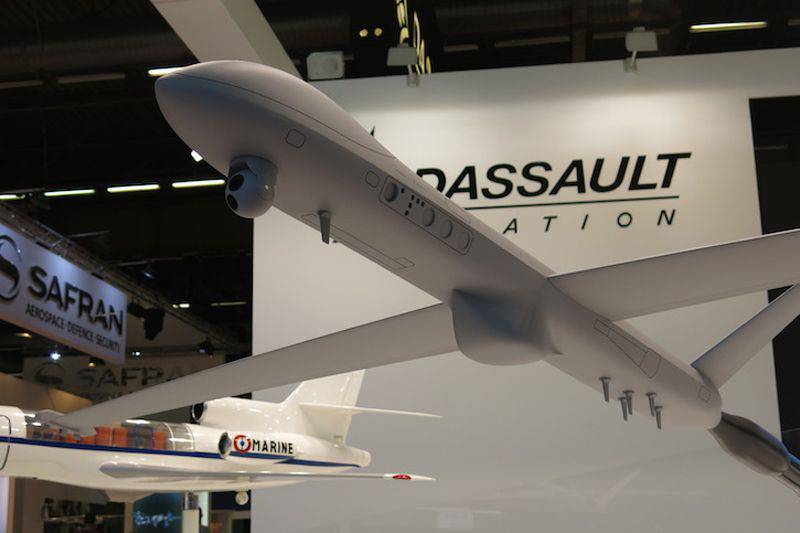
Will, finally, the European multinational project on medium-high UAV implemented this time? This was confirmed by the German Chancellor and the French President in April 2015. We'll see ... In any case, partners in the Male 2020 program, Dassault, Alenia and Airbus are hoping for that.
Expeditionary operations in Iraq and Afghanistan have taken the use of unmanned aerial vehicles (UAVs) to a new level, although these conditions were unique in their kind (as was the case with previous air operations in Korea and Vietnam). The withdrawal of most coalition forces from Afghanistan by the end of 2014 made it possible to reflect on the present and future use of uninhabited aviation.
Among other things, the military may be interested in the following aspects: what duties could best be performed by UAVs in a more general conflict scenario, how much their acquisition and operation costs, how UAVs can survive in the presence of enemy aviation of modern air defense systems and, finally, how they can be integrated into peacetime operations in home theaters.
Military operations in Afghanistan undoubtedly served as a powerful impetus for the development of the UAV market. Based on the experience gained, no one wants to go to war without (at least) unmanned aerial reconnaissance and surveillance equipment, just as no one wants to go to war without precision-guided munitions.
However, UAV sales still represent only a small share of the military aviation market. In a Pentagon request for 2016 sales drones account for only 5,94% of spending on "aviation and related systems". One of the factors limiting UAV sales is the belief that since most recent UAV operations have taken place in relatively free airspace, it is not necessary to be meticulous in meeting future needs.
But the facts speak for themselves, during the 78-day operation of the Allied forces in Kosovo in 1999, about NATO's 47 UAVs were lost, of which 35 were destroyed by Serbian air defense. If the UAV is large enough and can be seen from a certain distance, then this is an easy daily target. Three Georgian UAVs (including at least one Elbit Hermes 450) were hit over Abkhazia by Russian fighters on the eve of the Russian-Georgian war 2008 of the year.
In the short term, larger UAVs need defensive systems to scatter heat reflectors or jam the targeting systems of attacking missiles.
If price is not a problem, then to overcome modern anti-aircraft systems, you must move quickly or become invisible. Hypersonic rockets are being developed, so one can expect the appearance of hypersonic reconnaissance drones, although the vehicles with jet propulsion appear to be either too large or very limited in range.
To intercept hypersonic UAVs, a very short response time of air defense systems is needed. An example of this is Lockheed Martin’s SR-72 project, a breakthrough tool that reaches speeds up to 6 Mach numbers.
A definite indicator of the complexity of development problems in this area is the fact that although Lockheed Martin had been discussing its SR-72 Mach 6.0 project with engine experts from Aerojet Rocketdyne for several years, but according to the company, the final product in the form of a reconnaissance drone for air defense breakthrough will be ready no earlier than 2030. It is only known that commercial turbine engines will first be able to accelerate the SR-72 to approximately 3 Mach numbers (the speed achieved by the previous SR-7I Blackbird project), and that the hypersonic jet engines will then double this speed.
For work within the atmosphere, hypersonic reconnaissance vehicles may emerge as a byproduct of the project on the experimental XS-1 spacecraft, which is being worked on by Darpa (Directorate for Advanced Research and Development of the US Department of Defense) and Boeing and Northrop Grumman. The XS-1 aircraft is designed to deliver a payload of 1360-2270 kg into low Earth orbit. In addition, Boeing is responsible for creating a much larger X-37B Orbital Test Vehicle (OTV) prototype apparatus, which spent in orbit up to 674 days.
As for the small signs of visibility (stealth), the Lockheed Martin RQ-170 Sentinel UAV was undoubtedly designed to take into account two aspects: it must have a sufficient level of vitality to fly over countries such as Iran, but its loss should not be big consequences. This makes it the first low-cost UAV with reduced signatures. It is assumed that he entered service with the US Air Force in 2007 and was deployed at bases in Afghanistan and South Korea, possibly to monitor nuclear development in neighboring countries. One such UAV was lost over Iran in December 2011.
According to the US Air Force, the RQ-170 is in service with the 30 th reconnaissance squadron at the Tonop range and the 432 air wing, based at the Nevada air base.
Pay tribute to Aviation Week and Space Technology; it was only thanks to his public materials that the rather scanty information about the advanced reconnaissance UAV RQ-180 with controlled signatures created by Northrop Grumman (it seems another subsonic flying wing in the style of traditions B-2) became known. It is assumed that the contract for the development of RQ-180 was received in 2008 year, the first deliveries were made in 2013 year, and the device could be put into service in 2015 year.
It was suggested that the explosion over the Kola Peninsula in April 2014 was nothing more than the destruction of the Russian air defense apparatus RQ-180, which took off from Stavanger in southern Norway (which seems unlikely) to photograph Russian naval bases.
Hypersonic reconnaissance UAVs can be variants of the Darpa and Boeing program on the experimental XS-1 spacecraft. An alternative to the Boeing XS-1 project (below) is the Northrop Grumman concept, which is based on a similar configuration (above)
An experienced orbiter of the Boeing X-37B Orbital Test Vehicle has already flown the 674 of the day, but its purpose has not been revealed
High price
Even relatively low-technology UAVs cost a lot and provide a small level of operational flexibility compared to manned aerial vehicles. The United Arab Emirates sold eight unarmed General Atomics Predator XP UAVs with optical electronic stations and naval radar systems for a total of 220 million dollars. At first glance it seems that this is a little expensive for a relatively simple combination of an aircraft body and an engine with advanced communications, surveillance and targeting. It should be noted that although these UAVs do not have weapons, the US State Department separately gave permission to sell laser target designators for marking targets for attack by other means (for example, by airplanes). The US government has banned the sale of armed Predator XP to Jordan, but recently opened the market to India. The relatively high cost of systems for the UAE is partly due to the fact that it was the first order for a new Predator XP UAV, which first took off only in June of the 2014 of the year. For comparison, the US Army has provided 357,9 million dollars for 15 armed MQ-1C Gray Eagle UAVs from General Atomics in the budget request for 2016 year, which according to simple calculations is about 23,9 million dollars for the device.
One of the last well-known UAV deals was the sale to the Netherlands of four MQ-9 Reaper General Atomics UAVs. According to the US Department of Defense Office of Military Cooperation, four MQ-9 Block 5 UAVs, six Honeywell TPE331-10T turboprop engines, four General Atomics Lynx radars, standard optional equipment and spare parts for providing 3400 flight hours for a period of three years were rated at 339 million dollars, or 84,75 million for one unit.
As for the general situation in the field of export sales of unarmed UAVs, although the MQ-9 Reaper UAV was purchased by France (16), Italy (6), the Netherlands (4) and the United Kingdom (10), today only the British have the ability to install weapons . Italy requested this modernization, Turkey also did not lag behind and requested the delivery of armed UAVs from the USA. Spain (where the companies General Atomics and Sener merged) and Germany showed interest in purchasing the MQ-9 and may request an armed version. Australia also requested price and supply information; In anticipation of the order, Australian Air Force personnel undergo training in America on the MQ-9.
In February 2015, the US administration announced that it somewhat relaxed the restrictions, allowing the sale of lethal UAVs under intergovernmental agreements with approved (but not named) countries, subject to guarantees of targeted use. The point is that the previous policy (unannounced) absolutely did not provide for sales of American armed UAVs with the only (without explanation) exception, Great Britain.
However, the well-understood intention of the Americans to slow down the spread of armed UAVs stimulates other countries to develop aircraft with the capabilities they need.
Published at the start of 2015, the CH-3 CASC Caihong crash photos in Nigeria with two air-to-surface missiles indicate that China is one such country. Reports said that a CH-3 unit weighing 630 kg was sold to at least four countries, including Pakistan. A larger UAV (1150 kg) Chengdu Wing Loong (Pterodactyl), also armed, was delivered to three countries, most likely Saudi Arabia, the United Arab Emirates and Uzbekistan.
The Harpy UAV barrage of the Israeli company IAI was exported to China in 1994 (and later to Chile, India, South Korea and Turkey), but further sales of Israeli armed UAVs could be subject to pressure from the United States (as well as upgrading Harpy).
However, countries such as Brazil, Russia, India and South Africa (add China as a member of the BRICS) can develop UAVs and light guided missiles. In order to learn how to make more complex devices, the simplest solution is licensed production. As an example, Brazil, which recently began production of UAI IAI Heron MALE (Medium Altitude Long Endurance - medium altitude and long duration of flight), has recently begun. The device received the name Cacador (hunter).
Japan, South Korea and many European countries with their technological capabilities can and would like to respect the US International Trade Rules weapons (Itar), the Missile Technology Control Regime (MTCR) and the Wassenaar Arrangement (on the control of the sale of weapons and dual-use technologies), but do they want to do this in times of relatively high unemployment?
The various additional systems installed on this Male 2020 model of the 1: 10 scale, shown by Dassault at Eurosatory, clearly indicate that ground or marine monitoring (radar at the bottom of the fuselage), radio-electronic countermeasures and radio engineering intelligence service
In 2012, the LaWS (Laser Weapon System) laser weapons system was launched on board the Dewey destroyer (DDG-105)
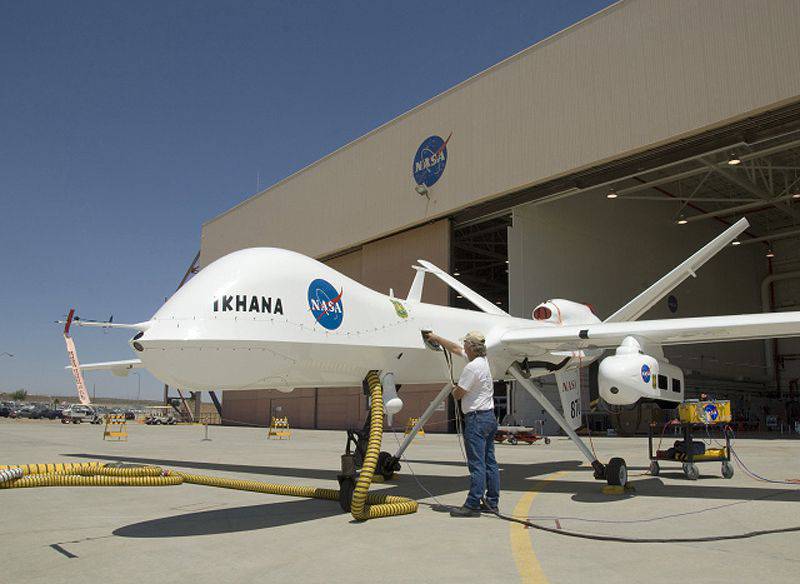
The MQ-9 UAV is still known by the General Atomics company as the Predator-B. This prototype, called Ikhana, will be used to test the air traffic radar DDR (Due Regard Radar - literally “proper attention” radar) from General Atomics
New developments?
In Western countries, the UAV industry may have already reached its limit on sales and will probably be in the same situation as the armored vehicle industry. This situation was very clearly illustrated by the Idex 2015 exhibition in Abu Dhabi, where there was just an abundance of ideally meeting the diverse requirements of the devices produced by those countries that had previously imported them. These countries not only manufacture such devices, but as evidenced by their presence at defense exhibitions, they are currently also exporting them. Previously, several examples of such UAVs have been mentioned, although, with regard to the real capabilities of China, they become known only when some kind of accident occurs. Like all that is developed in the country in the defense sector, China keeps a secret.
For the time being, we will put aside lighter UAVs, since very often their development comes down to reworking for military use of relatively advanced radio-controlled vehicles (or their parts) and issuing them a certificate of type from their own certification offices for a relatively high price - really a very profitable activity for those involved in this process are the so-called consulting agencies.
We draw attention to the UAV type MALE (Medium Altitude Long Endurance - medium altitude with a long duration of flight) and perhaps their closest subcategory. As for export sales in this area, then undoubtedly, the champions here (if you combine the models offered by Israel Aircraft Industries and Elbit) are Israelis. However, the countries appearing in this market are trying to find ways of avoiding dependence, especially when it comes to aviation means of destruction.
In Europe, the development of a multinational UAV has become a comedy or a drama, depending on how you look at it. At the moment, this situation is very beneficial to the American company General Atomics, since the customers of its UAV Reaper are France, Italy, the Netherlands and the United Kingdom. In particular, the three countries from this list could not agree on a single basic European project, but everyone ultimately agreed to go and buy the same abroad, demonstrating a great feeling of “unity”.
So, what will happen with the next European project, “confirmed” by Angela Merkel and Francois Hollande in April last year, in fact, one wonders, since the German Chancellor actually mentioned the possibility of an armed option, which is rather surprising on the basis of the current rejection of German weapons. The project is currently suspended in the air, and only time will tell when the real apparatus can rise into the air. In fact, this particular (and latest) project is rooted in industry, as it often happens. It is the result of an application made in June 2013 by Dassault, Alenia and Cassidian (now Airbus), but which has so far remained unnoticed - the norm, when politicians participate in the project. Well, now, more than two years later, it has become their own idea. The first photo of the article shows a photograph of a model presented by Dassault at the Eurosatory 2014 exhibition. The project was named Male 2020.
But absolutely the opposite situation. Europe has become the birthplace of several military rotary-wing UAVs, but none of them is a multinational product. But, as Caesar says, Cesarean, because almost all European developments lead to the Swedish company Cyb-Aero, whose Apid models often became the starting point for a number of projects. Rotary wing drones will be discussed further in the following parts of this review.
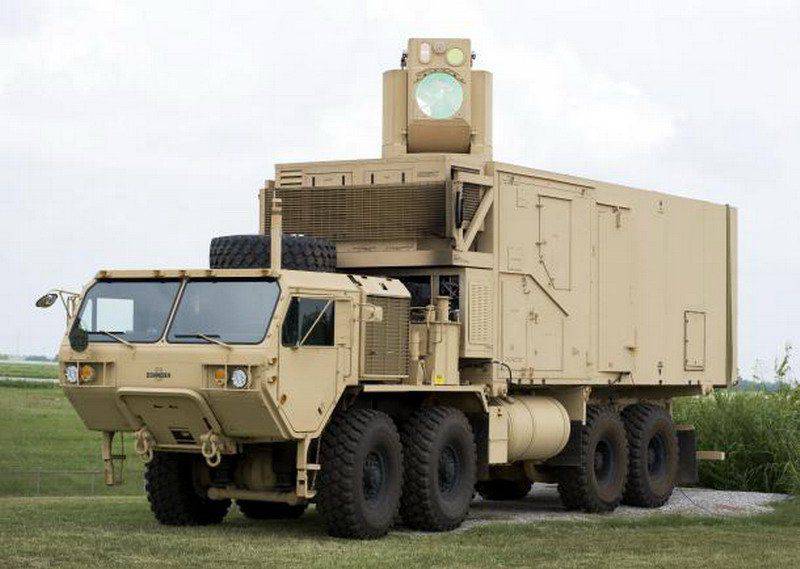
Future battlefields will see mobile laser weapons used against targets such as UAVs, mortar ammunition and tactical missiles. This 10 kW pilot plant was developed by Boeing with funding from the US Army.
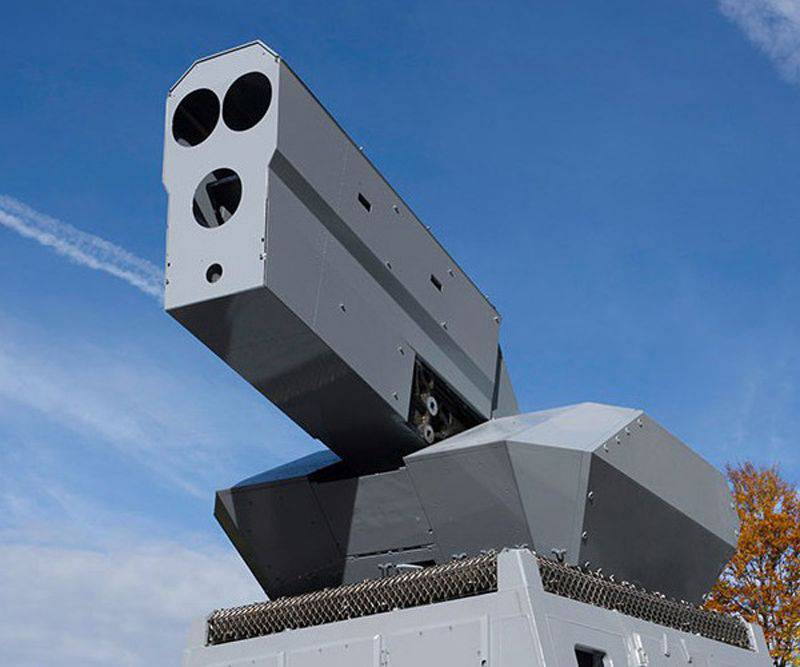
During a demonstration held by Rheinmetall in 2013, a high-energy laser successfully knocked down three jet UAVs within a few seconds. Hel laser was installed on the roof of the anti-aircraft tower with a turret gun.
People and failures
As for the cost of the UAV, there are a number of points of concern. The first is that “uninhabited” aviation in reality requires considerable human resources. For example, according to available data, the United States Air Force plans to allocate ten pilots for each MQ-l / MQ-9 Cap UAV (combat air patrol - combat air patrol) during normal operations. The Pentagon requires the army to provide Cap 65 patrols, each with four UAVs. Add operators of various equipment, service technicians and intelligence analysts, and it turns out that each unmanned flight hour requires hundreds of man-hours.
Another concern of the US Air Force is that at the moment there is a weak reward system for personnel for preparing to fly only on UAVs, which there (as in NATO) are called RPA (remotely piloted aircraft) (unlike the American army and fleet where they are called UAV [Unmanned Aerial Vehicle] and the Coast Guard and the Federal Civil Aviation Administration, who call them UAS [unmanned aircraft system]). One of the new areas of incentive for pilots of US Air Force drones is to increase payment for "flights" from $ 650 to $ 1500 per month for the entire six-year active service life.
One of the good News regarding the cost of UAVs, the number of accidents of more expensive types is reduced to acceptable levels. This is important because the US Air Force has more than 300 large UAVs on its balance sheet; There are currently 164 MQ-ls, 194 MQ-9s, and 33 RQ-4s from Northrop Grumman on this list.
Aircraft accidents of class A are defined as those that result in damage costing 2 a million dollars or more, this factor is calculated on 100 000 flight hours. Due to the increased professional level of pilots and the modification and improvement of these unmanned vehicles, the Class A accident rates for the MQ-1 and MQ-9 are currently striving for indicators of the F-16 manned Lockheed Martin, and the coefficients for the RQ-4 (redundant redundant systems) actually lower than that of the F-16 fighter.
Similar conclusions were made based on data from the United States Air Force over the past five years (2010-2014). During this time, the F-16 fighters flew an average of 195623 hours / year, had a class A accident rate equal to 1.79. Meanwhile, the MQ-1 with a piston engine flew 209233 hours / year and had an accident rate of 4.30. The MQ-9 UAV with a turboprop engine flew 119205 hr / yr and had a 2.35 coefficient. The US Air Force's largest RQ-4 drones flew just 15356 hours / year, but had an accident rate of just 1.30.
Compare apples with apples, not peaches
The battle of prices between remotely operated vehicles and traditional aviation is virtually absurd. A UAV devoid of all the systems required by the pilot on board (avionics, ejection seat, cockpit canopy, onboard oxygen generation system, maintaining high pressure, conditioning, etc.) is inevitably cheaper, not to mention the mass and volume gains that in the end, again results in a reduction in value. And one more essential moment in similar calculations. A fighter, for example, just like a UAV, is a system and requires its own complex infrastructure. Very often this cost factor is not taken into account. UAVs on the other hand are sold as systems, and after purchasing at least one vehicle, ideal (or close to them) flight conditions must be provided.
In addition, the main indicator that can not be measured like operating costs per hour, is efficiency. Whatever people say, the Global Hawk UAV can be in the air for much longer than the U-2 reconnaissance aircraft; his crew can work in shifts, and the U-2 pilot works as much as he can.
In the U-2 vs Global Hawk dispute, the real question is that “does Global Hawk need to do time-limited U-2 operations?” In other words, “is it advisable to use Rolls-Royce to plow the field?” On the other hand, take the risk of Gary Powers' adventures on U-2 or rather send Global Hawk if the environment is known to be unsafe, but the task is necessary? Some things cannot be measured and there is an "incomparable" word for it.
In principle, the cost of some military UAVs (especially small vehicles used by advanced forces) based on civilian development should be significantly lower. If the armed forces buy about 1000 UAVs per year, then according to some estimates, aerial amateurs bought about 2014 units in 500000 year, and this figure in the 2015 year could well reach one million. In addition to the advantages of large-scale civilian production, the military could use some low-cost civilian engineering. Examples include a collision avoidance locator with obstacles, video tracking of maneuvering targets and waterproof devices with four rotors, which can float and observe under water.
The leader in the civilian sector is Da-Jiang Innovations (DJI), a Chinese company with a staff of 2800, selling products to 2013 million dollars in 130 and about 2014 million in 400. The cost of its products varies from 500 to 3000 dollars. Following are the American company 3D Robotics and the French Parrot. Only in 2012, Parrot sold 218 000 UAVs.
In order to demonstrate the price-quality ratio of consumer UAVs, DJI released the Phantom 2014 Vision + GPS-controlled UAV in April with a stabilized camera that shoots 2 HD video / 30p HD resolution and 1080 megapixel-sized photos. The unit costs only 14 dollars.
The sector of commercial UAVs is relatively small, but, for example, over 2300 systems are already used in agriculture in Asia. The American market should explode after the Federal Aviation Administration finally defines its own rules for operating small-sized UAVs.
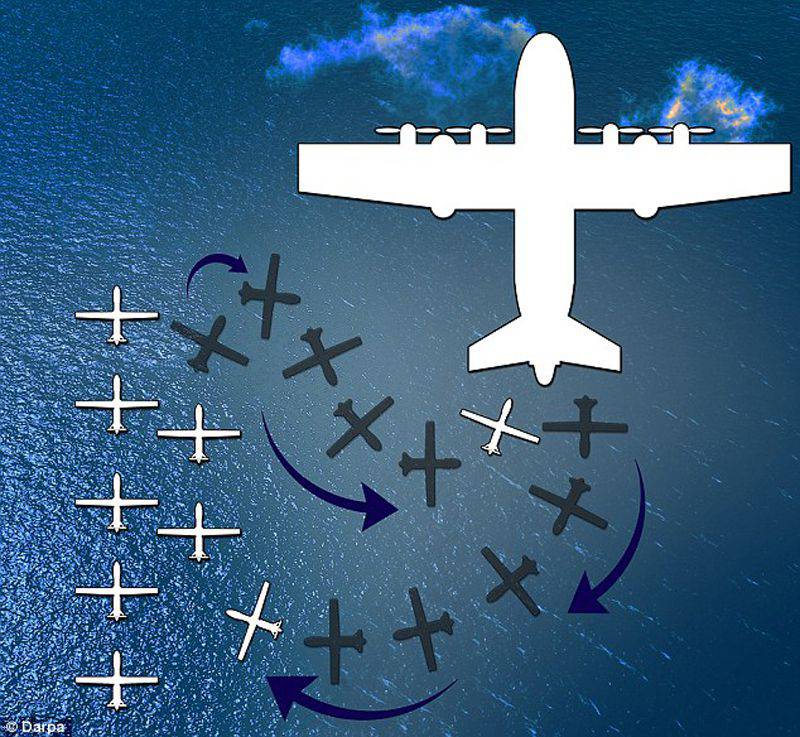
In 2014, Darpa issued a request for information regarding transport aircraft and bomber aircraft operating as “aircraft carriers in the sky”, which could launch and receive small universal UAVs to penetrate hostile airspace and attack well-defended targets.
Currently, it is expected that UAVs weighing less than 25 kg (but more than 2 kg) will be allowed to perform aerial survey and mapping, monitoring of crops, inspection of oil and gas pipelines, cell towers, bridges and high-rise buildings. The agency predicts that 2020 commercial UAVs will be in service in the US by 7500 in the year.
However, it is assumed that commercial UAVs (“small UAVs”) will be prohibited from working during the day with visibility less than 4,8 km, at a maximum height of about 150 meters (it is clear that it does not correspond to some of their tasks) and only in direct line of sight with an operator who should have a certificate of the operator UAV. The device must have identification marks of the largest practical size. The Federal Aviation Administration does not intend to issue permits to use UAVs to perform such ordinary tasks as, for example, pizza delivery.
The return of military UAVs to the continental part of the United States highlighted the need for measures to ensure that they would not interfere with other flying objects using the national airspace management system. To date, this has been realized through the use of a manned tracking aircraft or ground observer, which limits day-time operations.
The US Army has now begun installation of SRC's ground-based sense-and-avoid Gbsaa (ground-based sense-and-avoid) airborne systems at its key air bases in the mainland, starting with Fort Hood in December 2014. Next come Fort Drum air bases, Hunter Army, Fort Campbell and Fort Riley.
The Gbsaa system receives data via fiber optic cables or short-wave communication channels from several air sensors (three three-coordinate radar with electronic scanning SRC Lstar in the first case) and calculates the risk of collision of BLAH, compared with routes of other aircraft. The operator Gbsaa transmits this information to the UAV operator to take appropriate action to avoid collisions.
In the meantime, General Atomics has developed a UAV-installed Due-to-Regard Radar air traffic radar, which is proposed as a component of the ACAS-Xu (Airborne Collision-Avoidance System for Unmanned aircraft) unmanned aircraft collision avoidance system. DRR has been tested as part of an SAA (Airborne Collision Avoidance) system developed by General Atomics, which includes an automatic collision avoidance function and sensor fusion function to provide the UAV pilot with a picture of the air traffic around his vehicle. The company is working with NASA to integrate its SAA system into an experienced Predator-B UAV, designated Ikhana.
The joint program of the Darpa and the Navy Research and Development Administration, designated Tern, will allow small forward-based small ships to serve as bases for reconnaissance UAVs of the Male category.
Fighting drones
There is a growing awareness that in future conflicts, UAVs can pose a threat to any ground and surface forces. The obvious way to cope with a Predator-sized BLAH is a portable anti-aircraft missile system with an infrared-guided missile.
In order to protect UAVs from threats of this type, Elbit Systems has developed a system of controlled counteraction to infrared mini-Music. The attacking missile is first determined by the missile attack warning system, then captured by the thermal imaging automatic tracking, which allows you to send a laser beam exactly on the attacking missile and thereby confuse its guidance system.
It is possible that large UAVs may in the future have a certain system of defensive micro-missiles or interceptors, similar to the active defense complex for Helicopter Active Protective System (Haps) helicopters, recently developed by Orbital ATK to protect against RPGs.
The advanced ground units are likely to have anti-aircraft weapons to destroy manned aircraft and medium / large UAVs, but they currently do not have the means to combat small-sized UAVs, which, moreover, can be used simultaneously in large quantities ("flocks") . Thus, research on the control of unmanned vehicles focuses on the detection of numerous small air targets and the development of inexpensive means of defeating them.
Radar detection is effective, but not feasible at the level of a small unit, so the possibility of using passive infrared and other wavelengths is being studied. With regard to the mechanisms of defeat of UAVs, mini-rockets (for example, Spike weighing 2,5 kg, armed with the US Navy), being mass-produced, have a cost per item of tens of thousands of dollars, which makes them too expensive to fight the micro-UAV “flock”.
However, ground-based and ship-based directed energy weapons using lasers or microwave waves offer the advantages of a low cost per hit and less indirect loss and damage compared to, for example, fragmentation ammunition. An exposed UAV does not have to be destroyed. Damage to its antenna or sensor may well make it aerodynamically unstable, which will adversely affect the performance of the task.
Laser weapons provide not only lower cost (less than a dollar) of one destruction, quick target acquisition and the ability to cope with maneuvering targets, but also has virtually unlimited magazine capacity. On the other hand, it is influenced by atmospheric phenomena (especially water vapor and smoke) and can hit only one target at a time. It is clear that this weapon cannot attack over-the-horizon targets.
Boeing demonstrated a 190 kW laser system installed on a truck chassis, which was developed under the HEL-MD program of the American Army (High Energy Laser Mobile Demonstrator - high power laser, mobile demonstration unit). UAVs and mortar ammunition were successfully hit at distances up to 5 km and 2 km, respectively.
During a recent field test, Athena's fiberglass laser (Advanced Test High Energy Asset - an advanced high-power pilot plant) with a power of 30 kW, developed by Lockheed Martin, disabled a small truck engine at a distance of more than 1,6 km.
Boeing has contracted to develop a prototype HP-BCSS (High Power Beam-Control Subsystem) high-power beam control system. It must ensure the extreme accuracy of laser weapons developed by BAE Systems, Northrop Grumman and Raytheon for use on US Navy ships as part of the SSL-TM semiconductor laser control program.
Sea trials began in 2012 year with the installation of laser weapons system LaWS (Laser Weapon System) on board the destroyer Dewey (DDG-105). The LaWS installation with a power of 30 kW received the designation AN / SEQ-3 (XN-1). In 2014, the SSL-Quick Reaction Capability (QRC) system was installed aboard the US Non Ponce, which is part of the fifth US Navy.
The purpose of the SSL-QRC and SSL-TM programs is to build an advanced experimental model with a power of 2016-100 kW in 150, and ultimately install a high-energy laser on ships such as Arleigh Burke class destroyers (DDG-51) and LCS frigates . The US Navy plans to carry out a shipboard laser machine program up to the 2018 year with initial readiness in the 2020-2021 years. It is expected that these more powerful lasers will be effective against various surface and air targets at distances up to 15-20 km.
In 2014, the Naval Forces Research Administration gave Raytheon a contract worth 11 million dollars to install a short-range laser system on a Hummer armored car. As expected, this development will lead to the creation of a laser weapon with an 30 kW power and a compact phased-array radar, which will be installed on the promising Joint Light Tactical Vehicle (JLTV) tactical armored car.
The German company Rheinmetall recently acquired a comprehensive experience in the use of commercially available high-energy lasers and their adaptation as weapon systems, including in the field of air defense. In 2013, she successfully demonstrated a 50 kW laser, as well as an 30 kW power option with an optical tracking system mounted on an Oerlikon Revolver Gun anti-aircraft system and connected to the Oerlikon Skyguard radar fire control system. A 30 kW laser shot down three jet UAVs flying at a speed of 20 m / s at a distance of about two kilometers.
Two CT-7 turboshaft engines will be installed on the five-ton Boeing Swift Phantom demo. Darpa claims 400 node speed when loading 40% and wingspan with screws in 15 ring fairings. It is not yet decided whether the device will be manned or not.
After Northrop Crumman closed the Lemv program on a drone with a long duration of flight, Hybrid Air Vehicles bought the prototype HAV2013, which will serve as the basis for the manned Airlander, in the 304 year. Subsequently, the possible unmanned version
To be continued
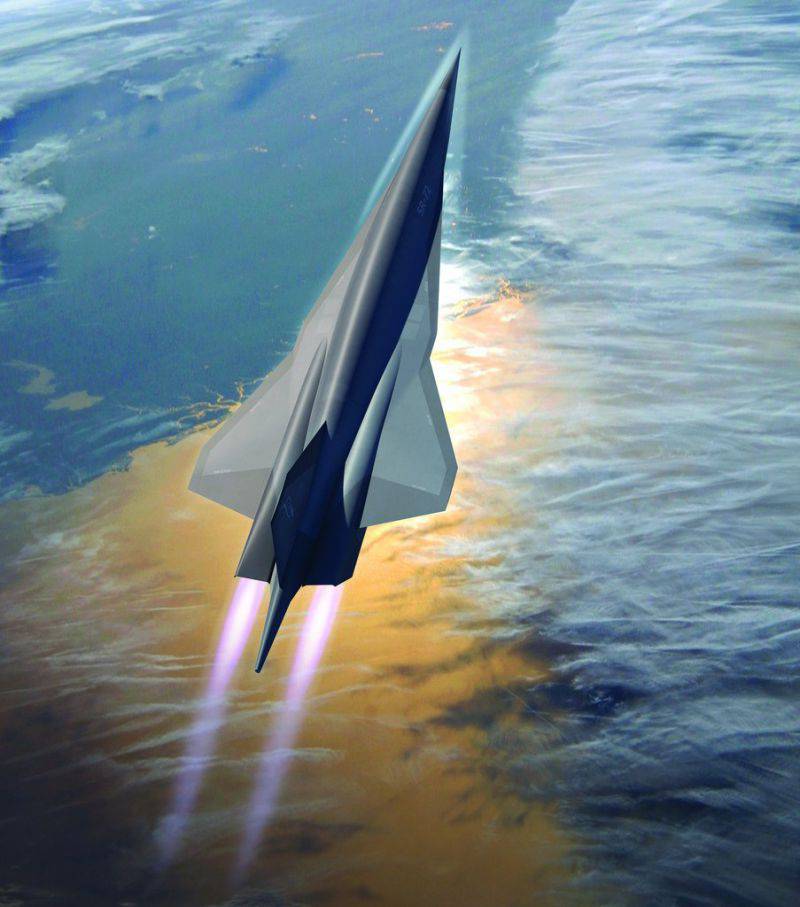
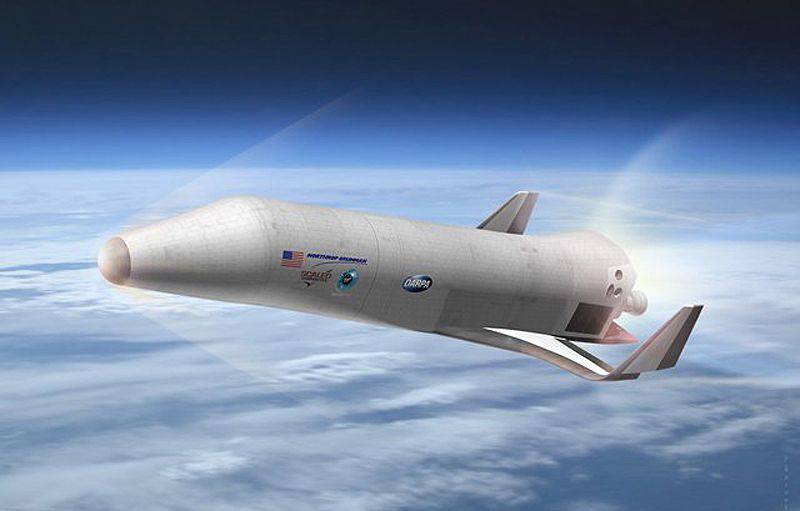
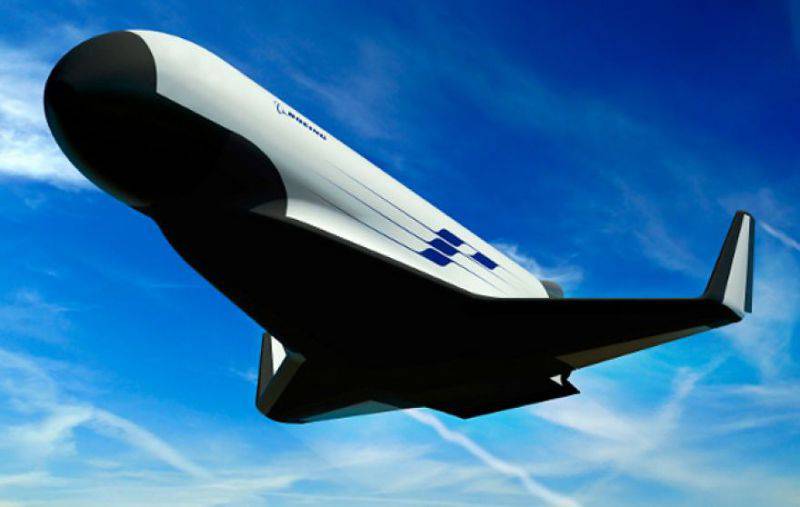
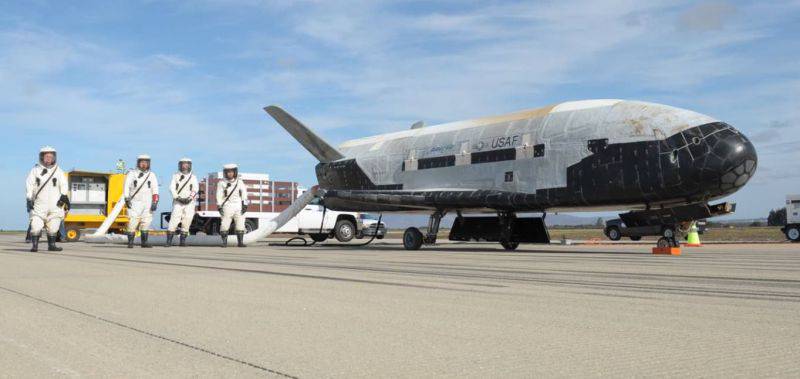
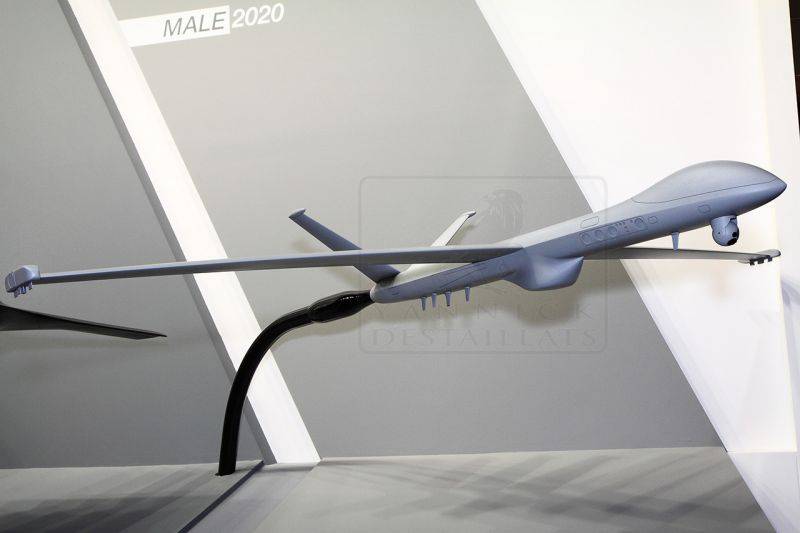
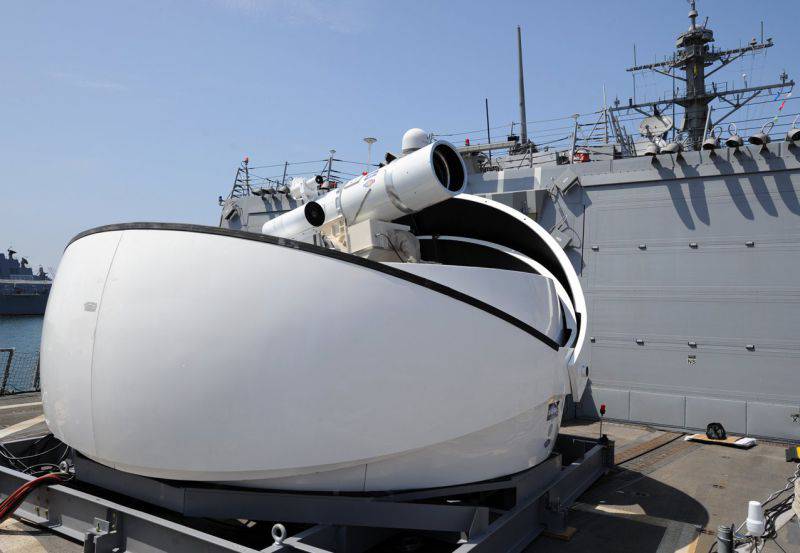
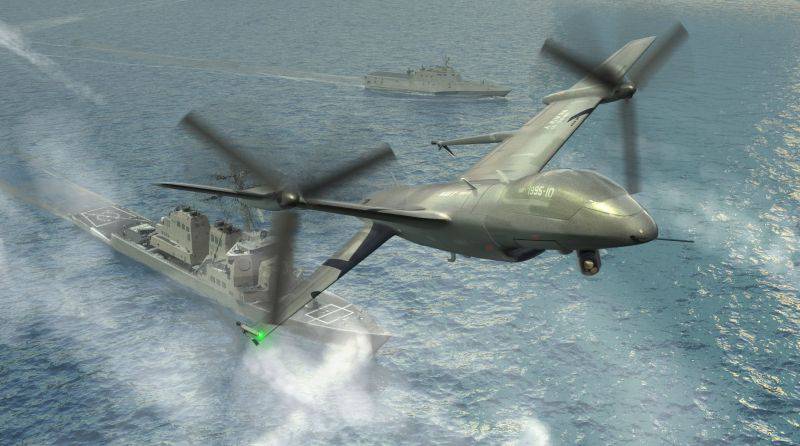
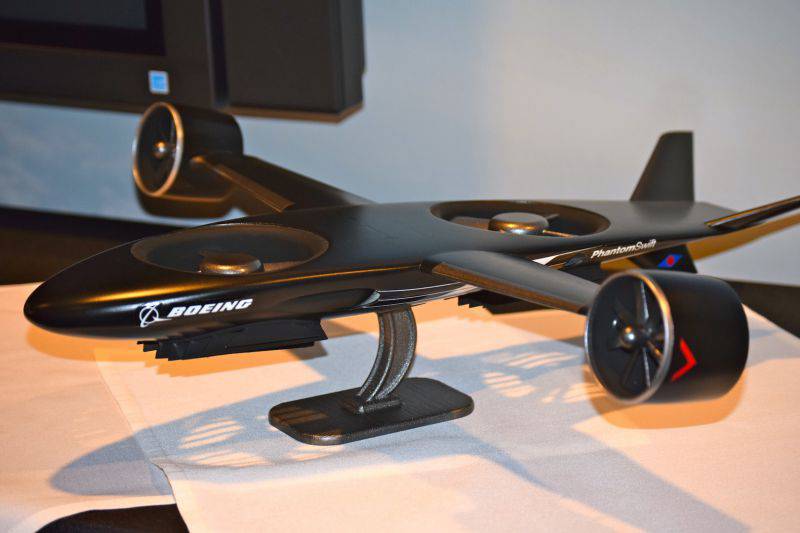
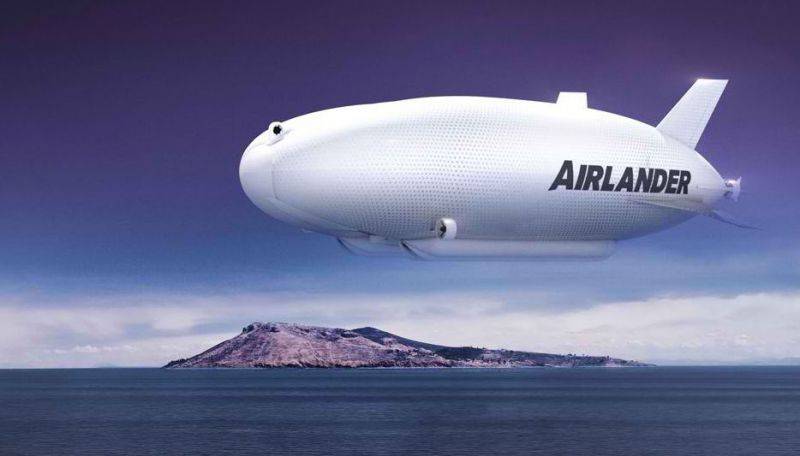
Information